If you enjoy this article, why not  Buy me a Coffee
Buy me a Coffee
Andrew Goddard writes: I was rather shocked a couple of years ago when I spotted in my Twitter feed the following tweet from the Archbishop of Canterbury:
Today we mark the Feast of the #Assumption of the Blessed Virgin Mary. Like Mary, let each of us say our yes to God’s call and trust the boundless love of Jesus Christ.
It was a tweet alongside a video of his trip to Walsingham for its national pilgrimage back in May. I later discovered that this was the second tweet of the day on the subject from the Archbishop and that four hours earlier the video had been tweeted and we had been informed:
It was joyful to be at the national pilgrimage to @ShrineOLW earlier this summer. As we celebrate the #Assumption of Mary today, I pray that the example of the mother of God will draw us to Jesus afresh.
So two tweets on the same day making the same point. What was I to assume (pun intended)? I have to confess that my initial thought—given the reference to Mary saying yes to God’s call—was that the Archbishop’s twitter account must be run by a young intern who had confused the assumption with the annunciation (the biblically recorded account of Gabriel announcing she would bear Jesus, Lk 1.26–38). Or perhaps it was a recognition that many Anglicans do believe in the assumption and mark it alongside Christians of other denominations? Or was it simply a desire to highlight his recent Walsingham visit on an appropriate day in the church’s calendar but which was then inappropriately named? (August 15th is in Common Worship—but not the 1662 Book of Common Prayer, 1928 Proposed Prayer Book, or 1980 Alternative Service Book—a festival in which Anglicans celebrate the Blessed Virgin Mary).
Apart from the reference to the assumption, the verbal content of the tweets is excellent and uncontentious: Christ-centred exhortation based on the example of Mary who, because of his orthodox Christology, Archbishop Justin rightly calls “the mother of God” (theotokos). This fits with his pattern of focussing on Christ and with the theme of the Walsingham Festival this year, “Do whatever he tells you” (Mary’s words at the Cana wedding in John 2.5). As he says in the video “It’s about allowing Mary to point us to Jesus and that is for me the centre of this pilgrimage”.
But the basis on which these exhortations are made is surprising: that “we” were on that day “marking” or “celebrating” the “Feast of the Assumption”. To clarify the multiple problems it is helpful to explore three questions:
- What is the Assumption?
- Does the Church of England mark it?
- Should we be believe it and mark it?
The Assumption of Mary
The assumption of Mary refers to a belief concerning how she departed her life on earth. About this, Scripture is silent—we last see her at the start of Acts waiting for the Spirit. As late as the fourth century there was no clear church teaching about the end of her life but shortly after the Council of Ephesus in 431, the first Council to deal explicitly with Mary, this began to change. The Council, on the basis of teaching about Christ as truly God, favoured Cyril and theotokos (God-bearer) over Nestorius and Christotokos as a designation for Mary. Following this, various accounts concerning what happened to Mary began to gain prominent circulation and the event began to be marked by Christians. The “assumption” refers to the belief that Mary’s soul and body were reunited and taken to be with Christ in heaven. In the words of the 2004 Anglican-Roman Catholic (ARCIC) statement on Mary:
The feast of Mary’s ‘falling asleep’ dates from the end of the sixth century, but was influenced by legendary narratives of the end of Mary’s life already widely in circulation. In the West, the most influential of them are the Transitus Mariae. In the East the feast was known as the ‘dormition’, which implied her death but did not exclude her being taken into heaven. In the West the term used was ‘assumption’, which emphasized her being taken into heaven but did not exclude the possibility of her dying. Belief in her assumption was grounded in the promise of the resurrection of the dead and the recognition of Mary’s dignity as Theotókos and ‘Ever Virgin’, coupled with the conviction that she who had borne Life should be associated to her Son’s victory over death, and with the glorification of his Body, the Church (para 40).
This belief continued to be important in much popular piety and in formal celebrations. Tim Perry in his excellent Mary for Evangelicals (IVP, 2006, see also his The Blessed Virgin Mary with Daniel Kendall, SJ) notes that “By the eighth century, the assumption was widely and popularly believed, even if not officially approved” (p 240). Although the Reformation is usually seen as rejecting much of the church’s belief and practice in relation to Mary, the reality was slightly more complex. Many leading Reformers, for example, held not just to the biblically authorised doctrine of the virgin conception of Christ but to her perpetual virginity. Zwingli kept the Marian festivals, including the Assumption, in the city of Zurich. In this continued acceptance of the assumption, however, he was unusual, and most Anglicans rejected the assumption or held it as adiaphora. Paul Williams in his study of Mary in the Anglican tradition (in Mary: The Complete Resource edited by Tina Beattie and Sarah Jane Boss, here at p251) notes Tyndale (1494–1536) was particularly vehement:
Of what text thou provest hell, will another prove purgatory; another limbo patrum; and another the assumption of our lady: and another shall prove of the same text that an ape hath a tail….
As pertaining to our lady’s body, where it is, or where the body of Elias, of John the evangelist, and many other be, pertaineth not to us to know. One thing we are sure of, that they are where God hath laid them. If they are in hyevaen, we have never the more in Christ: if they be not there, we have never the less … as for me, I commit all such matters unto those idle bellies, which have nought else to do than to move such questions; and give them free liberty to hold what they list, as long as it hurteth not he faith, whether it be so or no:…
He also cites Whitaker (1548–95) who commented:
The papists celebrate the feast of the assumption of the blessed virgin Mary with the utmost honour, and the Rhemists in their notes on Acts 1 praise this custom exceedingly: yet Jerome, in his book to Paula and Eustochium, concerning the assumption of the blessed virgin, says that ‘what is told about the translation of her body is apocryphal’…
The place of the assumption of Mary thus marked a clear difference between Protestant (including Anglican) and Roman Catholic theology, liturgy and piety. The growth in Marian visions from the mid-19th century onwards gave added support for many Catholics to the belief of Mary’s assumption and pressure grew for it to become formal church teaching. Mary was particularly important in the spirituality and teaching of Pope Pius XII and in November 1950 in Munificentissimus Deus he officially defined the dogma (para 44):
By the authority of our Lord Jesus Christ, of the Blessed Apostles Peter and Paul, and by our own authority, we pronounce, declare, and define it to be a divinely revealed dogma: that the Immaculate Mother of God, the ever Virgin Mary, having completed the course of her earthly life, was assumed body and soul into heavenly glory.
The following paragraph added:
Hence if anyone, which God forbid, should dare willfully to deny or to call into doubt that which we have defined, let him know that he has fallen away completely from the divine and Catholic Faith.
It is therefore unsurprising that the 1981 ARCIC report Authority in the Church II stated:
The dogmas of the Immaculate Conception and the Assumption raise a special problem for those Anglicans who do not consider that the precise definitions given by these dogmas are sufficiently supported by Scripture. For many Anglicans the teaching authority of the bishop of Rome, independent of a council, is not recommended by the fact that through it these Marian doctrines were proclaimed as dogmas binding on all the faithful. Anglicans would also ask whether, in any future union between our two Churches, they would be required to subscribe to such dogmatic statements (para. 30).
Do Anglicans mark the Assumption?
The tweets say that the Archbishop of Canterbury is joining with others (“We”) to “mark the Feast of the #Assumption of the Blessed Virgin Mary” and “celebrate the #Assumption of Mary today”. The problem is that there is no such marking or celebration within the Church of England and there has not been for 470 years.
August 15th is, since Common Worship, a festival in which we remember the Blessed Virgin Mary. It is also the day in which the Roman Catholic Church has the solemnity of the Assumption and the Orthodox Church marks the Dormition. This has, however, never in the post-Reformation Church of England been a celebration or marking of the assumption and in fact the festival may be celebrated on September 8th instead (when the church traditionally marks the birth of Mary).
As we have seen, Anglicans and other churches of the Reformation had significant problems with aspects of Marian piety and teaching, in particular the assumption. These theological disagreements led to changes in Anglican liturgy where in 1549 and 1552 the Calendar initially removed all Marian feasts except the Annunciation and Purification (both events mentioned in the gospels). This only changed in 1561 when, in the words of Colin Podmore, speaking at Walsingham on Mary and the Anglican Tradition:
The Calendar of 1561 is of crucial importance because it saw the return, after those brief breaks that I mentioned, of three of the Marian feasts. From 1561 onwards the Church of England again marked Our Lady’s Conception on 8 December, her Nativity on 8 September, and the Visitation on 2 July. Only the Assumption remained excluded. (Italics added).
Paul Williams similarly notes in his account of the 1561 changes that “the conspicuous continuing omission is the Assumption, which disappeared from Anglican worship in 1549”. He then adds “only partially to return in some twentieth century Anglican calendars”.
I am unclear whether any Anglican calendars actually formally celebrate the assumption on this day (I’d be surprised but am willing to be proved wrong). The connections made to it liturgically clearly vary in different provinces. Indeed, on careful scrutiny, I discovered (to my surprise) that the Church of England’s own liturgy goes quite some way to help those Anglicans who do believe in the assumption in the way it frames the liturgy for August 15th.
The Church of England collect could be read as affirming a special glorious place in heaven at present to Mary. However, it need not be read as such particularly in the light of other prayers referring to the departed in Church of England liturgy (on which more generally see here) in which we pray “according to your promises, grant us with them a share in your eternal kingdom”:
Almighty God, who didst look upon the lowliness of the Blessed Virgin Mary and didst choose her to be the mother of thy only Son: grant that we who are redeemed by his blood may share with her in the glory of thine eternal kingdom; through Jesus Christ thy Son our Lord, who liveth and reigneth with thee, in the unity of the Holy Spirit, one God, now and for ever.
The set readings similarly include some passages which have been traditionally read in support of the assumption, several of which are used in the Roman Catholic Lectionary on August 15th:
- Psalm 132 is the Psalm for the Second Service. Its verse 8—“‘Arise, Lord, and come to your resting place, you and the ark of your might”—was often cited in Christian tradition with the ark as a type of Mary in defences of the assumption of Mary to be with her ascended son.
- Psalm 45:10–17 is the Psalm for the Principal Service. This has been read as, in the words of Pius XII in his encyclical pronouncing the dogma, describing Mary “as the Queen entering triumphantly into the royal halls of heaven and sitting at the right hand of the divine Redeemer”.
- The Old Testament reading of Isaiah 61.10, 11 also could take on new meanings in the context of belief in the assumption: “I will greatly rejoice in the Lord, my whole being shall exult in my God; for he has clothed me with the garments of salvation, he has covered me with the robe of righteousness, as a bridegroom decks himself with a garland, and as a bride adorns herself with her jewels”.
- Combined with the above texts and figural/typological hermeneutic, the New Testament lesson of Revelation 11.19–12.6, 10 opening with “Then God’s temple in heaven was opened, and within his temple was seen the ark of his covenant” would be seen as further confirmation of Mary’s heavenly presence, now alongside “her child…snatched up to God and to his throne”.
- Although Song of Solomon 2.1–7 (for the Second Service) is not as prominent as other texts from the Song in traditional attempts to defend the doctrine from Scripture (the 1950 papal encyclical refers to 3.6, 4.8 and 6.9) one can see that the words “Let him lead me to the banquet hall, and let his banner over me be love” could also easily take on new meanings once read with the woman of the Song as a type of Mary if one believes the assumption.
The Episcopal Church in the US also remembers Mary (simply as Saint Mary the Virgin: Mother of Our Lord Jesus Christ) on August 15th and although it too does not speak of “the Feast of the Assumption” its collect (also used in the Scottish Episcopal Church (p 37) and in the new ACNA BCP) points even more strongly to Mary’s assumption than that in the Church of England:
O God, you have taken to yourself the blessed Virgin Mary, mother of your incarnate Son: Grant that we, who have been redeemed by his blood, may share with her the glory of your eternal kingdom; through Jesus Christ our Lord, who lives and reigns with you, in the unity of the Holy Spirit, one God, now and for ever. Amen.
In short, despite the Archbishop’s tweets and a certain amount of careful ambiguity in liturgical wording and selection of readings, “we” in the Church of England do not have a Feast of the Assumption and have not had since 1549. That is because we do not believe in the doctrine of the Assumption.
Should we believe in the Assumption?
It is beyond question that a number of Anglicans do believe in the Assumption of Mary, perhaps even in the form expressed in the 1950 encyclical. This has been true not just of more catholic Anglicans such as E.L. Mascall but even of those who might be viewed as more liberal theologically such as John Macquarrie who gave a detailed biographical account (in his Mary for All Christians (T&T Clark, 2001 (2nd edn), pp. 82–96) of his journey to the place where “I have come to see the dogma of the Assumption as the expression in appropriate theological symbols of some of the most hopeful affirmations of the Christian faith”. Evangelical New Testament scholar, John Wenham, could also say at a Mariological conference at Walsingham, in a paper then published by Churchman in 1972:
Finally, I see Mary as our forerunner in heaven. I cannot quite accept the dogma of the Assumption as promulgated in 1950, but I can very nearly. I do not think that there is evidence that her earthly body saw no corruption—I find it very difficult to believe that she suddenly disappeared and that this amazing miracle was not widely known in the Early Church—but I do believe that clothed in her spiritual body, she in her full humanity was taken into heaven.
However, as already noted, the Church of England since the Reformation have never formally accepted the assumption of Mary and this has been one of the major divides with Rome (and, in some importantly different ways, with Eastern Orthodox belief). In an attempt to address this, in 2004 ARCIC produced a report on Mary and the Marian dogmas which concluded
that the teaching about Mary in the two definitions of the Assumption and the Immaculate Conception, understood within the biblical pattern of the economy of hope and grace, can be said to be consonant with the teaching of the Scriptures and the ancient common traditions (paragraph 60).
This was just one of a number of controversial claimed agreements in the document. It is important that, in the ARCIC report’s own words, “It is not an authoritative declaration by the Roman Catholic Church or by the Anglican Communion”. In fact, the Church of England’s Faith and Order Advisory Group produced a helpful set of rather critical papers in 2008 including ones from an evangelical perspective by Martin Davie (pp 49–65 and also in Anvil) and David Hilborn (pp 84–90). In February 2011, General Synod passed the following very cautious motion from the Council for Christian Unity and rejected an amendment explicitly welcoming the report:
That this Synod, affirming the aim of Anglican–Roman Catholic theological dialogue “to discover each other’s faith as it is today and to appeal to history only for enlightenment, not as a way of perpetuating past controversy” (Preface to The Final Report, 1982), and in the light of recent steps towards setting up ARCIC III:
(i) note the theological assessment of the ARCIC report Mary: Grace and Hope in Christ in the FOAG briefing paper GS 1818 as a contribution to further dialogue;
(ii) welcome exploration of how far Anglicans and Roman Catholics share a common faith and spirituality, based on the Scriptures and the early Ecumenical Councils, with regard to the Blessed Virgin Mary;
(iii) request that, in the context of the quest for closer unity between our two communions, further joint study of the issues identified in GS 1818 be undertaken – in particular, the question of the authority and status of the Roman Catholic dogmas of the Immaculate Conception and the Assumption of the Blessed Virgin Mary for Anglicans; and
(iv) encourage Anglicans to study the report with ecumenical colleagues and in particular, wherever possible, with their Roman Catholic neighbours.
It therefore cannot be claimed that following the ARCIC Report the Church of England has accepted the doctrine of the assumption.
For evangelicals there is certainly the need for a rediscovery of Mary’s importance after often over-reacting against the place she is given in Catholic teaching and piety. There are signs of this happening as in Timothy George’s 2007 article, Tim Perry’s book and the 2009 Evangelicals and Catholics Together (ECT) statement on Mary taking the same title as the Walsingham Festival this year. As Perry writes, “we can and should affirm the role of God’s grace throughout Mary’s life, so that, as a result of such grace, she is indeed an example to believers and that her example precisely is her grace-enabled perseverance” (p. 285). However, that sentence from Perry begins “While immaculate conception and bodily assumption are notions closed to traditional Protestants…” and, as Davie and Hilborn point out, there are good reasons why this is so and should remain the case. Even if evangelicals need to recover a proper place for Mary in their theology, that place needs to be biblically and theologically defensible and so cannot embrace Mary’s assumption into heaven as part of the teaching of the church.
Hilborn sums up the three classic evangelical objections to the Roman Catholic teaching on the assumption: the lack of biblical authority (as illustrated above, the claimed biblical support depends on peculiar readings of particular texts into which belief in the assumption is read); its relatively late doctrinal development; and its detraction from a focus on Christ.
Davie looks at alleged biblical precedents for Mary’s assumption (as opposed to the typological and figural readings noted above) such as Elijah or Enoch but then notes that
there is nothing in the Bible to suggest that what happened to these two individuals provides a precedent for the fate of either Mary or any other Christian believer. In the New Testament the only person who enters into glory in body and soul prior to the final resurrection of the dead is Christ Himself and there is no suggestion that this will be true of anyone else… there is no general biblical pattern of especially godly people being assumed body and soul into heaven that could then apply to Mary: in the Bible itself what happened to Enoch and Elijah is seen as exceptional rather than normative.
He also highlights that while it is true that believers have been with raised with Christ already, “we shall only experience this fully at the end of time. (Rom. 8:18–25; 2 Cor. 5:1–5) and so we distort the biblical pattern if we suggest that “in Mary at least this tension has already been overcome”. Even more seriously, there is the risk that in talking of Mary’s assumption we give to her “a role that in the New Testament belongs solely to Christ. In the New Testament it is Christ and not Mary or anyone else who foreshadows what will be when the new creation is revealed”.
As the ECT statement says, applying the Church of England’s Article 6, on the sufficiency of Scripture, to the assumption:
At one level, the doctrine of Mary’s bodily assumption applies to Mary what the Bible declares to have happened to the prophets Enoch and Elijah—that she was taken into heaven, body and soul, at the end of her earthly life. In this way, Mary is believed to have anticipated what many Evangelicals refer to as the rapture of the Church at the return of Christ. Mary’s assumption presupposes a number of things that are indeed a part of our common Christian confession: the reality of heaven; the communion of saints; the overcoming of death; the resurrection of the flesh; the certain triumph of Jesus Christ over sin, hell, and the grave; belief in the literal, visible return of Christ in glory; the goodness of creation; and the unity of soul and body for all eternity. None of these biblical truths, however, requires belief in the bodily assumption of Mary, which is without biblical warrant (the vision of Revelation 12:1-6 says nothing about Mary’s body being taken into heaven) and has no basis in the early Christian tradition.
The apostolic constitution Munificentissimus Deus (1950), in which Pope Pius XII promulgated the dogma of the assumption, does not take a position with respect to Mary’s death, yet this is a question of some theological importance. If Mary was taken to heaven without death in the manner of Enoch and Elijah, was this because her body was incorruptible and thus not subject to the fact that “the wages of sin is death” (Rom. 6:23)? On the other hand, if she actually died (without having sinned) and then was raised from the dead to heavenly glory, then her resurrection would seem to be parallel to that of Christ who alone died and rose again for our justification (Rom. 4:24-25). Both opinions are present in the apocryphal writings that form the basis of later legends (such as Christ’s surrender of the heavenly kingdom to Mary at her coronation in glory), but it seems prudent to follow here the silence of the Scriptures and the reticence of the Church Fathers of the first three centuries.
In short, there is absolutely no biblical evidence for Mary’s assumption. The biblical truths that it is claimed to be consonant with and to bring to a focus are either truths which relate uniquely to Christ or to all believers. There is nothing in Scripture to suggest that the pattern and outcome of Mary’s departure from this life was any different from that of any other faithful follower of her son. To claim there is theological rationale for distinguishing her journey from ours is, furthermore, to make a biblically unwarranted distinction which risks detracting from the unique work of the Saviour she bore. It is through Jesus’ full humanity that our human nature has been redeemed and entered into glory and it is Jesus who in his person as truly God and truly human now intercedes for us at the Father’s right hand.
Conclusion
Predictably, responses on Twitter and elsewhere showed how divided Christians remain in relation to Mary. The Archbishop’s tweets and scenes in the video delighted some and enraged others. Some responses highlighted how Christians fail to engage with each other well or respect different traditions, something Archbishop Justin consistently challenges as he urges us to disagree well. Others, presuming he sends or approves all his tweets himself (which is often not the case for high profile figures), offered their own assessments of Archbishop Justin in the light of how they already viewed him. These too were not always charitable.
The first key question, however, is simply whether the tweets were right in what they said about the assumption. They are right if the “We” refers to “some Christians” rather than “We in the Church of England” or “We Anglicans” although the terminology favours the Roman Catholic West over the Orthodox East (it would have been better for one tweet to use “Assumption” and the next to speak of “Dormition” if that was the intention). But “we” in the Church of England (and the overwhelming majority, perhaps the whole, of the Anglican Communion) have no such Feast. We do not as a church believe in what the Feast marks in other parts of the church. In suggesting otherwise, the tweets therefore significantly misrepresented Anglican doctrine and practice.
The next question is whether any of this matters. In one sense this could all be dismissed as making a mountain of an article out of a molehill of a few words in a couple of tweets. But that is to forget the significance of what appears in the name of the Archbishop of Canterbury, even on Twitter, if it touches on matters of theological controversy.
Another reason it matters is the deeper issue of different approaches to issues on which the church is divided. We cannot and should not deny that different traditions exist and that some of our divisions arise from doctrinal disagreements which are long-standing and significant. Attempts are, however, sometimes made to achieve greater Christian unity by going down that path but ultimately this undermines ecumenical endeavours. The ARCIC report on Mary failed to be received by the Church of England in large part because the Anglicans involved in it were not honest about the real differences, including on the assumption of Mary. It is therefore not surprising if some read the “We” in the tweets as suggesting that celebrating the Feast of the Assumption is part of the teaching and pattern of Church of England worship or implying such doctrinal disagreements are unreal, unsubstantial or unimportant. This understandably upsets and offends many faithful Anglicans, adding fuel to some of the already fiery disputes.
Unity among Anglicans and ecumenically is much better served by being clear about, explaining, and exploring our different beliefs and practices and then seeking to deepen mutual understanding and bonds of Christian love across our doctrinal divides. Ten years ago, Evangelicals and Catholics Together sought to follow this path in relation to Mary and their joint statement ends with these powerful words:
As brothers and sisters in Christ who are in lively communion with the saints on earth and the saints in heaven, we together pray—in words Richard John Neuhaus composed for us before he died:
Almighty and gracious God, Father of our Lord and Savior Jesus Christ who was in the fullness of time born of the Blessed Virgin Mary, from whom he received our human nature by which, through his suffering, death, and glorious resurrection, he won our salvation, accept, we beseech you, our giving thanks for the witness of Mary’s faith and the courage of her obedience.
Grant to us, we pray, the faithfulness to stand with her by the cross of your Son in his redemptive suffering and the suffering of your pilgrim Church on earth. By the gift of your Spirit, increase within us a lively sense of our communion in your Son with the saints on earth and the saints in heaven. May she who is the first disciple be for us a model of faith’s response to your will in all things; may her “Let it be with me according to your word” be our constant prayer; may her “Do whatever he tells you” elicit from us a more perfect surrender of obedience to her Lord and ours.
Continue to lead us, we pray, into a more manifest unity of faith and life so that the world may believe and those whom you have chosen may, with the Blessed Virgin Mary and all the saints, rejoice forever in your glory. This we ask in the name of Jesus Christ, who lives and reigns with you and the Holy Spirit, one God forever and forever.
Amen.
 Revd Dr Andrew Goddard is Assistant Minister, St James the Less, Pimlico, Tutor in Christian Ethics, Westminster Theological Centre (WTC) and Tutor in Ethics at Ridley Hall, Cambridge. He is a member of the Church of England Evangelical Council (CEEC). This article was published previously.
Revd Dr Andrew Goddard is Assistant Minister, St James the Less, Pimlico, Tutor in Christian Ethics, Westminster Theological Centre (WTC) and Tutor in Ethics at Ridley Hall, Cambridge. He is a member of the Church of England Evangelical Council (CEEC). This article was published previously.





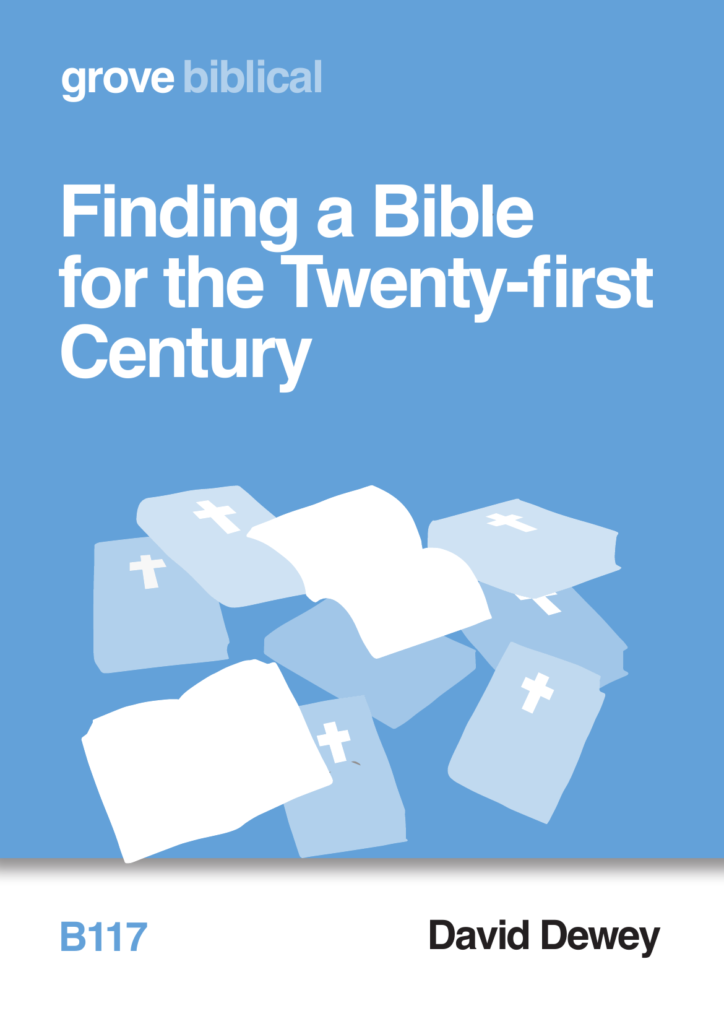






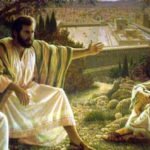

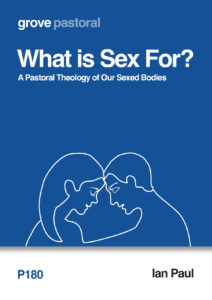

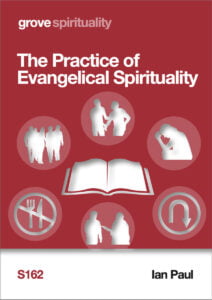
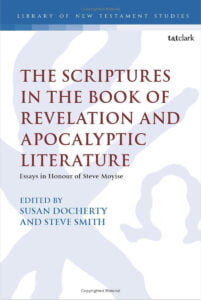

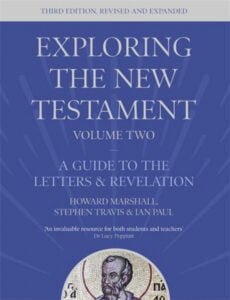

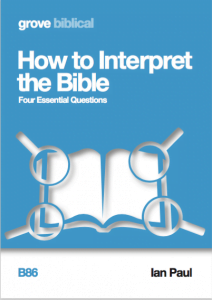
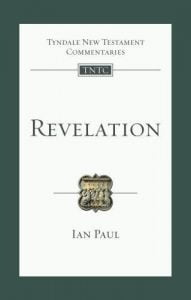
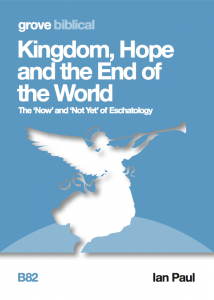



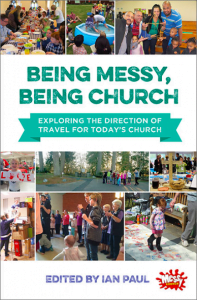
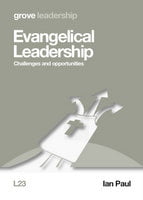
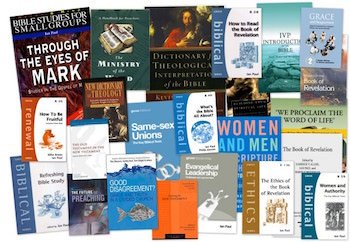
A lot of the problem lies with the ambiguous use of the word ‘believe/belief’, and even more widely with the way the pistis word group is rendered.
If a simple definition is adopted (e.g., ‘adjudge to be more than 50% likely to be true’), and if it is always made clear what is meant by the word (if the speaker is one who uses the word in incompatible ways), then most problems disappear.
Things have got so bad that people say they ‘believe’ something even when
a- they have fallen among a community that is traditionally attached to said thing, when they themselves have not begun to think it through;
b- they like it, or prefer it.
(Don’t get me started on the BBC use of the word ‘faith’.)
As she clearly ceased to be a virgin reasonably soon after the birth of Jesus, I do not refer to her as the Blessed Virgin Mary. I am happy to call her Blessed Mary, because she was indeed blessed; she would have been chosen to be the mother of Jesus Christ for her combination of faith, ancestry and maternal qualities.
“It’s about allowing Mary to point us to Jesus and that is for me the centre of this pilgrimage”.
NO, Justin. Jesus Christ points us to our Father and Creator, and we may know Him though the Holy Spirit who indwells us. There is neither need nor room for Mary in this – unless you don’t actually know Jesus Christ personally, which I suspect is true of many in institutional churches, from when the improper elevation of Mary began right up to the present.
I believe that Mary herself weeps in heaven at the blasphemies committed by persons who over-elevate her.
According to Scripture Mary is in the grave, not in heaven. We are not raised until the ‘last day’, all together.
Mary’s *body* lies in a forgotten grave, but I do not believe in soul sleep for believers; the New Testament is clear that believers are with the Lord between their bodily death and resurrection.
Mary was chosen by God on merit, was she, Anton?
Do you think God would give over his Son to a woman who was only a nominal believer and who would be wont to neglect her children in favour of the bottle?
So it was on merit?
Abraham, Jacob and the rest, all chosen based on merit, were they Anton?
And how about you?
To be fair, Mary’s role was unique. Surely there were reasons why God chose her?
Last time I looked, faith was a gift from God.
Anton
You misunderstand the Catholic Church’s veneration of Mary. When Catholics refer to her as the Blessed Virgin Mary, it does not imply that she replaces God or mediates independently of Christ. The Catholic Church meticulously distinguishes between veneration, which is honour, and adoration, which is worship. Mary is honoured specifically because of her unique and indispensable role in salvation history as the Mother of Jesus. Crucially, all devotion directed towards her is intended to lead directly to Christ, not away from Him.
When Catholics state that “Mary leads us to Jesus,” it is not because they lack a personal relationship with Christ. Rather, it is rooted in scriptural accounts that illustrate her active role in guiding believers to Him, such as at the wedding feast of Cana, where she instructed the servants, “Do whatever he tells you” (John 2:5). Her intercession is understood as entirely secondary and dependent upon Christ’s merits; she is never considered divine or a substitute for God.
The Church explicitly teaches that any extreme misrepresentations of Mary, such as treating her as divine or independent of Christ, are contrary to the Catholic faith and would indeed be considered blasphemous. Authentic Catholic devotion remains profoundly Christ-centred, with Mary being honoured as an exemplary model of faith, obedience, and maternal care for all believers.
Hi, Jack. (Remind me not to greet you on an aeroplane!)
I think I understand Rome’s Mary very well. Why is it that you can find (e.g. novena) prayers addressing Mary that ask HER to forgive sins, yet when we pray to God our Father we end by saying “through Jesus Christ our Lord”?
Off topic briefly, I see you are knocking ‘consequentialism’ again on your blog re Hiroshima. I agree with you that the end does not automatically justify the means, but it seems to me that taking a decision in the light of its likely effects/consequences is a normal part of logical reasoning.
Anton.
In approved novenas, Mary is asked to pray for us, intercede, or obtain grace from her Son. In the Memorare: “O Mother of the Word Incarnate, despise not my petitions, but in thy mercy hear and answer me.” Sometimes the wording can sound strong, e.g. “deliver us from sin,” “obtain pardon for us,” or “be our refuge.” But these are always understood as intercessory requests, not that Mary is granting absolution.
That discussion went off-track. I was hoping people would discuss Gaza and Ukraine. I’ve set out the arguments against consequentialism concerning intrinsically evil acts, i.e., those acts that can never be justified regardless of the circumstances or benefits. Mass, indiscriminate bombing that deliberately targets innocent non-combatants is per se evil.
I’m not seeking to discuss wartime aerial bombing but a point of logic. Taking a decision in the light of its likely effects/consequences is a normal part of logical reasoning. What is the difference between that and ‘consequentialism’, which you condemn?
The Catholic scholar Eamon Duffy has stated that “there is, clearly, no historical evidence whatever for” Mary’s Assumption (What Catholics Believe About Mary, published by the Catholic Truth Society, 1989, p.17). For a scholarly summary of the earliest traditions and manuscripts about Mary’s fate, see Ancient Traditions of the Virgin Mary’s Dormition and Assumption by Stephen J. Shoemaker (2003). The texts discussed by Shoemaker are the start of the tradition behind the ‘infallible’ declaration of 1950. Time does not validate an inauthentic tradition, however. Shoemaker’s more recent book Mary in Early Christian Faith and Devotion (2016) shows clearly that the origins of the cult of Mary lay in Gnosticism: she is said to have been given esoteric salvific knowledge by Christ.
Theotokos actually means the “bearer of God”. I notice that the New Testament nowhere calls her the “mother of God”, only the “mother of Jesus”. Although it is not in question that Jesus is divine and Mary was his mother, the phrase would inevitably make pagans listening to evangelists think that Mary is divine. It is, indeed, alarming how many of the Vatican’s Marian doctrines take attributes which scripture ascribes to Jesus Christ alone and attribute them also to Mary. This has been going on for 1500 years and it has not clearly stopped yet.
Anton — not only would she be thought of as divine, but given the ambiguity of “God” in this context, in certain quarters to be seen as th least ‘equal’ with God the Father. Indeed in one particular church in Spain, Mary is still viewed as the liberator from Moorish control in the 15th century. The decor of the church interior bears witness to this!
And how many of the mediaeval cathedrals are called Notre Dame!
Colin McCormack:
Many people misunderstand Catholic teaching on Mary, thinking that honouring her means putting her on the same level as God. In reality, the Church makes a clear distinction between worship and veneration. Adoration (Latria) is the highest form of worship, reserved for God alone. It acknowledges God as Creator and Redeemer. Veneration (Dulia) is the respect and honour given to saints and angels, recognizing their holiness and closeness to God. Hyperdulia is a special, higher degree of veneration given to Mary because of her unique role as Mother of God. This is still not worship, and it always points back to Christ.
Catholics teach that Mary is entirely dependent on her Son. She is not divine and is never considered equal to the Father, Son, or Holy Spirit. Her Assumption is described as a “singular participation in her Son’s Resurrection” (Catechism). Her intercession is secondary and derivative, drawing its efficacy entirely from Christ. As Pope John Paul II said, she intercedes as a mother, always leading people to Him—think of her guidance at Cana: “Do whatever he tells you” (John 2:5). She is the Mother of all believers, invoked as Advocate, Auxiliatrix, and Mediatrix, but always in communion with Christ.
Over centuries, Mary has been invoked in many historical and cultural contexts. In 15th-century Spain, she was seen as a protector against Moorish control, an expression of devotion and intercession, not divinity. Marian apparitions, like Our Lady of Guadalupe, show her maternal care and ability to draw people to Jesus, often influencing culture and evangelization.
The honour given to Mary is veneration, not worship. She is a creature, fully dependent on God, whose role is to point us toward her Son. Strong devotional language or art reflects this relationship and the maternal intercession she offers, always rooted in Christ and His grace.
I dont think youre helping your argument by calling her the ‘Mother of all believers’. God the Father is the Father of all believers (even Jesus is not that) so using very similar language to describe Mary is suspicious. Why the need to refer to her as that, a mere woman who more than likely had further children after Jesus? Im not one of them. She might have had a unique role, but that doesnt make her unique. And then you make it worse by calling her Advocate (with capital A), something very much associated with the Holy Spirit. And I thought it was Jesus who interceded for us?
As for the turning water into wine episode, Im not sure it portrays her in a good light. She seemed more concerned with the wedding going well, and to ensure that she tried to get Jesus to ‘perform’. Jesus seems to say to her, why do you bother me with such trivialities?
My spidey senses are tingling, and not in a good way.
Good point.
I remember watching some of the funeral for that singer from the Pogues. It was obvious Mary is highly elevated for the ordinary catholic.
Anton — not only would she be thought of as divine, but given the ambiguity of “God” in this context, in certain quarters to be seen as at least ‘equal’ with God the Father. Indeed in one particular church in Spain, Mary is still viewed as the liberator from Moorish control in the 15th century. The decor of the church interior bears witness to this!
Apologies for having to repeat
Archbishop Justin rightly calls “the mother of God” (theotokos).
It is bad enough that the Roman Church and its descendants (including the Anglican Church) should teach that Jesus is not the Son of God but co-eternal with him, but this is even worse. So ‘God’ – I hesitate to ask which god, maybe all three – owes his existence to Mary, and Mary is the Supreme Being? Thankfully, while the A of C may hail her as the Mother of God, this has never been Anglican doctrine.
Mary was the human mother and God, by his impregnating spirit, the divine father. Jesus, accordingly, was both human and divine, uniting the two natures in one. It is essential for the rational integrity of the gospel and biblical revelation that we do not obscure that mystery. It is utter nonsense to think that Mary, having been chosen by God to be the human mother of his Son, thereby became herself divine and the origin of that which, by the Spirit, was divine in her womb.
Hi Nestorius!
But seriously, you’re looking at the argument from the wrong direction: The Church of England actually does generally affirm the chalcedon definition, at least the athenesian creed which we certainly affirm relies heavily on it. Why did they have this argument? Because people were denying the essential unity of Christ, and therefore the essential God-ness of Jesus. Why can we call Mary God-Bearer? Because she bore the incarnate word within her. Why not Christ-Bearer, as Nestorius intended? because there’s a docetic overtone going on: Jesus isn’t really God, Christ Jesus the anointed one is God.
It’s not supposed to be arguing for the divinity of Mary – Jesus is the one squarely in View. Mary didn’t originate God – she originated Jesus, as his Mother, and Jesus was a unity of God and Man.
I’m not sure your rather cryptic reply addresses my point, and there seems to be a misunderstanding as to the meaning of theotokos when you say ‘Why can we call Mary God-Bearer? Because she bore the incarnate word within her.’ The English word can mean either to generate/produce as offspring/be the parent of, or to carry. The -tokos element relates to the former sense, making ‘mother of God’ a perfectly good translation, given that a female parent is necessarily a mother. The sense is not she merely carried God in the womb: she generated him.
So far as the gospels are concerned, Mary was the mother of Jesus in the ordinary human sense. The idea that she generated God is entirely alien to Scripture, and essentially pagan. Hence the iconography that commonly accompanies the idea – a normal-sized picture of Mary and a Tom-Thumb-sized adult baby in her lap.
Steven Robinson:
There’s confusion here about what Catholics actually teach about Mary! The Church has never claimed that Mary is divine or that she creates God. She is not a “supreme being” or a source of divinity. The dogmas about Mary being the Mother of God (Theotokos) and her Assumption are entirely Christocentric – they are about her relationship to Jesus, not about her being divine.
When Catholics say Mary is the Mother of God, they mean that she is the mother of Jesus Christ, who is fully God and fully man. The title protects the truth of Christ’s divinity and humanity. It emphasises that the one she bore in her womb is the eternal Son of God, not that Mary is the origin of his divinity.
Similarly, the Assumption doesn’t make Mary divine. It simply recognises that, having been preserved from sin and fully united to her Son, God brought her body and soul into heaven as a sign of the destiny all the faithful. Again, it’s about her participation in Christ’s victory over death, not about her being a deity.
Mary is fully human, the Mother of the incarnate God, and uniquely graced, but not divine and not the source of God’s existence. The teaching is meant to honour her role and point to Christ, not to confuse or compete with the mystery of God.
Dear Thomas, As a lifelong Anglican, my “wrong direction” starts with Holy Scripture. I wouldn’t disagree that the Nestorian position had more than a hint of docetism. Nevertheless, I have sometimes wondered if Chalcedon position might have possessed a smidgeon of Apollinarianism; maintaining that Christ has one active principle only – the divine logos? He, Apollinarius, denied that the humanity of Christ had any capacity for initiative.Nestorius’s propensity was to create a separation between Jesus’ divinity and his humanity. If our Lord has had to experience the continual analysis of his being (theolgical scissors and paste) he would have turned cartwheels and, as well, concerning his ethnic origins when, according to one ex Archbishop, declaring in 2020, that ‘a Middle Eastern Jesus’ is the most accurate [description] !
How easily theotokos (bearer of God) morphed into ‘mother of God’. And how powerfully mother of God morphed into a Mary (and a Jesus) who were perceived not only in artistic terms but culturally and even theologically within certain Catholic circles; almost as divine beings in human ‘dress’ . The Apollarian ‘logos’ reigned and still reigns supreme in certain quarterters. To this day, for many of the faithful, history and biblical truth take a back seat! ,Jesus is described in Galatians 4:4 as ‘born of woman’ So what does that make him? How long will it be before every aspect of his divine origin, his ethnic background and his whole being will be rehashed to conform to, if not a caricture then worse, a diabolical rehash of what the Biblical witness has always made transparently clear.
Finally, I repeat some thing that was stated previously: ‘mother of God’ certainly since the enunciation of theotokos has become part of the same package as ‘Our Lady’ and yes, ‘Queen of heaven’. Jesus Christ *only* is Saviour and Lord (Kurios). And his mother gave birth – not to an ambiguous ‘God’ but to God incarnate!
Thanks for this fascinating take on today’s celebration/ remembrance of Mary.
It’s the tone of the November 1950 Munificentissimus Deus that strikes me as significant and emblematic of a different ‘style’ of theological statement between the Roman Catholic Church and the Church of England. The encyclical stated: ‘Hence if anyone, which God forbid, should dare willfully to deny or to call into doubt that which we have defined, let him know that he has fallen away completely from the divine and Catholic Faith.’ It’s clarity and absolute, unquestionable certainty is as significant as the dogma being asserted. Denying this aspect of the faith is tantamount to denying it all – ‘fallen away completely.’ There’s no wiggle room at all. Disagreeing with one (secondary in many people’s eyes) aspect of teaching means that a person has sold out totally and is now outside RC orthodoxy. In other words, if you don’t believe this you are no longer one of us and we can no longer allow you to receive Holy Communion with us. There’s no hierarchy in which Christological and Trinitarian beliefs are in the top rank and Marian dogmas are secondary – they’re all of the same status.
Rome is perfectly able to change its dogmas and doctrines when it wishes, despite its hubristic claim to be incapable of error in its teaching. Its theologians are masters of sophistry, and its bottom line is simply to cease teaching and enforcing doctrines it no longer finds convenient.
Anthony Williamson:
Care to provide evidence for that assertion (nearly said assumption)?
It keeps silent about contraception nowadays, perhaps in the knowledge that a huge proportion of Catholic married couples of childbearing age use barrier methods at least.
So, no actual example then.
Tim:
When considering Munificentissimus Deus and its definitive declaration regarding the Assumption, it is important to understand the Catholic perspective on dogmatic pronouncements. From a Catholic viewpoint, this document is not an isolated assertion of a Marian doctrine, but rather an affirmation of the integrity of the deposit of faith as it has been discerned and understood by the Church under the guidance of the Holy Spirit.
The Catholic Church views Marian dogmas, such as the Assumption, not as “optional extras” but as intrinsically connected to Christology and the broader mystery of salvation. Consequently, denying these dogmas is seen as undermining the fullness of Catholic faith.
It is understandable that from an Anglican perspective, this approach might appear as a rigid hierarchy of belief, especially given a tradition that often prioritises core Christological and Trinitarian doctrines, viewing Marian teachings as more devotional or secondary. However, Catholics understand that their framework is distinct: it is not about diminishing Christ or the Trinity, but about recognising doctrines like the Assumption as logically and theologically bound to the truths about Christ, rather than being separate additions. In this sense, the definitive language used in such pronouncements is intended less as a punitive measure and more as a statement about the inherent coherence of the Catholic faith as a unified whole.
Therefore, while the authoritative style of Munificentissimus Deus is unmistakable, it reflects a theological logic wherein faith cannot be selectively accepted or rejected. According to Catholic reasoning, to reject one piece of this interconnected structure is to destabilise the entire edifice built around Christ and His salvific work. This is why full assent to such doctrines is tied to Communion, not because the Church arbitrarily seeks to exclude individuals, but because it upholds the comprehensive nature of the faith.
Observance of this historically fictitious feast day poses a particular problem for those following the lectionary readings. For that day the lectionary chooses to lay aside for morning prayer the cycle of readings in Ezekiel and James and inserts readings from Isaiah and Luke. Like a lot of these “saints days” readings, the morning prayer readings seem to have very little connection with the event that is supposed to be marked. But since the “assumption” of Mary (which is itself a tautology) is inhistorical could I ask the lectionary compilers to please leave the readings alone for these marginal feasts. The alternative solution I adopt is to ignore the set readings entirely and carry on with the cycle for both Old and New Testament readings but really the lectionary should leave the cycle of readings alone. If people want to do their own reading on this day by all means do so but they might be better off in the Roman Catholic Church!
Andrew Corke:
The word “Assumption” refers to Mary being taken up body and soul into heavenly glory. Calling it a “tautology” misunderstands it. It’s not saying “Mary assumed herself,” but that God assumed Mary in a unique participation in the resurrection promised to all. The term highlights the action of God, not a self-act.
You claim the Assumption is “inhistorical” because there’s no first-century document describing it. That’s true in a literal narrative sense, but many foundational Christian truths were preserved primarily through oral tradition, liturgy, and devotion before being written down.
Early Christian devotion to Mary’s Dormition/Assumption is well-attested in the Eastern Church by the 4th–5th centuries, with feasts, hymns, and pilgrimages. This shows a historical continuity of belief, even if we lack contemporary eyewitness accounts.
I’d be grateful for links to the evidence of the 4th–5th century feasts, hymns and pilgrimages if you could provide them for the most unequivocal. (If the material is not all at one site, the links would need to be with gaps between the full stops as this website does not allow more than one functional link per comment.)
They are in the two books that I mention above: Ancient Traditions of the Virgin Mary’s Dormition and Assumption (2003) and Mary in Early Christian Faith and Devotion (2016). But this is not an unbroken tradition running back to the time of Jesus, and it comes from the Greek world in which the tradition was to put words into the mouths of historical figures according to what the writer thought they should have said, rather than the Hebraic tradition of fidelity to what was actually said. Hence the gnostic gospels about Jesus from the same era containing obvious nonsense.
Thanks – a good lead.
Putting words into the mouths of historical figures according to what the writer thought they should have said (beyond the normal conventions of ancient historiography) is what we see with the Koran. See also my note on Muhammad below.
O/T here but it’s been four days now since the jury retired to consider its verdict in the Chris Brain trial. Does anyone have any news on this?
The Church of England is a Catholic but Reformed church. So just let those on the Anglo Catholic wing of the Church of England who wish to celebrate it do so and Protestant evangelicals in the C of E who don’t agree with the Assumption of Mary are free to ignore it
What consenting adults do in private is no concern of mine. Go in haste.
The Catholic Church teaches that Mary was assumed body and soul into heavenly glory, a doctrine formally defined by Pope Pius XII in 1950. While some argue that there is no explicit biblical proof for the Assumption, Catholics understand it to be consistent with biblical themes, theological principles, and historical tradition.
Scripture offers several indications that support the Assumption:
1) New Eve and Ark of the Covenant: Mary is understood as the New Eve and a parallel to the Ark of the Covenant. Just as the Ark contained God’s presence, Mary carried the Incarnate Word.
2) Revelation 12:1: The description of a woman “clothed with the sun, with the moon under her feet, and a crown of twelve stars” in Revelation 12:1 suggests heavenly glory and hints at bodily glorification.
3) Old Testament Precedents: The Old Testament provides examples of individuals being uniquely glorified by God. Enoch “walked with God; and he was not, for God took him” (Genesis 5:24; Hebrews 11:5), and Elijah was taken up by a whirlwind (2 Kings 2:11). These instances demonstrate God’s power to glorify individuals in extraordinary ways, making Mary’s Assumption plausible within God’s divine plan.
4) Full of Grace: Luke 1:28 refers to Mary as “full of grace” (kecharitōmenē), indicating her unique participation in Christ’s redemptive work. Given her preservation from sin, it logically follows that her body would not undergo decay (Romans 6:23; 1 Corinthians 15:50–54).
The Assumption is profoundly Christ-centered, highlighting Mary’s full participation in Jesus’ victory over death. She is considered the “firstfruits” of the Church, being the first to fully share in the resurrection life (1 Corinthians 15:20–23). Since humans are body-soul beings and Christ redeemed both body and soul, Mary’s glorification serves as a prefigurement of the destiny God intends for all the faithful (Romans 8:11; Philippians 3:21). It also stands as a sign of hope, reminding believers that mortal life can lead to heavenly glory and inspiring devotion and union with Christ.
Devotion to Mary’s Dormition (falling asleep) and Assumption existed for centuries before its formal definition, celebrated in liturgies, hymns, and pilgrimages, particularly in the Eastern Church. While some scholars note the absence of extensive early written documents, this does not negate the belief’s validity. Oral tradition, liturgical practice, and devotional life were crucial in transmitting the truth of Mary’s Assumption. The Church, guided by the Holy Spirit, safeguards the deposit of faith (John 16:13; 1 Timothy 3:15), and silence in early texts does not mean a belief is incorrect.
Mary’s Assumption is not a legend but a doctrine consistent with Scripture, sound theological reasoning, and centuries of Christian devotion. It serves as a powerful sign of hope for all believers, pointing to the ultimate destiny God desires for everyone united with Christ.
Good to hear from you, Jack, was wondering how you are.
I seem to have shape-shifted into a Dodo!
Not been too good of late, but on the road to recovery.
And now a Court Jester!
Good to hear from you again Jack.
Ah, yes Happy Jack welcome back, even as court jester, a role that went beyond foolery to include the expectations to take part inore serious matters and accompany soldiers to the battlefield in times of conflict, beyond their entertainment duties for the troops, they would be tasked with distracting the opposition and sometimes delivering dangerous messages across the enemy lines.
To respond, not with myrth or laughter, but with a dangerous message.
There is no salvation in the name of person of Mary. Only in the name and person of Jesus, the Christ.
The point about Mary being the first fruits of resurrection union with Jesus is interesting.
Not sure that Roman Catholicism subscribes to the doctrine of Union with Christ, as do protestant reformers, such as Calvin.
It is union with Christ, not the Roman Catholicism, the Magisterium that embodies eternal salvation.
A reformed theologian has recently written a spoken that while he loves biblical and systematic theology he is not saved by doctrine, but only by the name and person of Jesus.
Likewise, Roman Catholicism.
Yours in Christ, geoff
Thanks for the response Jack.
You will be aware that reformed catechisms such as Heidelberg draw out Union with Christ.
A book that I don’t have, nor have is read is by Grant Macaskill, Union with Christ in the New Testament.
Here is a review:
https://www.thegospelcoalition.org/themelios/review/union-with-christ-in-the-new-testament/
Well, at least Jack has recovered from his chronic illephilia. Prayers for your good self.
Only until I can find out where the little fella is hiding! I’m not sure where he’s gone.
Geoff, you’re right that “there is no salvation in the name of the person of Mary.” The Catholic Church wholeheartedly affirms that salvation comes only in and through Jesus Christ, crucified and risen. Mary is not a saviour; she is the first and greatest disciple of Christ, and her whole being points us to Him.
Where Catholic and Reformed Christians sometimes differ is not on the truth that Christ alone saves, but on the way we speak about the Church’s participation in Him. Catholicism affirms what you call “union with Christ” – not all Reform traditions do. St. Paul describes salvation as being “in Christ,” and Catholic theology speaks of this as a real participation in Christ’s divine life. The Catechism says: “The Word became flesh to make us ‘partakers of the divine nature’” (CCC 460, quoting 2 Pet 1:4).
The Magisterium is not an alternative to union with Christ; it is the servant of Christ, guarding and handing on the truth of the gospel so that believers may live in this union faithfully. Salvation is not “in Roman Catholicism” but in Jesus Christ, and the Catholic Church safeguards the fullness of Christ’s gifts (Word, Sacraments, Apostolic faith) to help the faithful persevere in Him.
We are not saved by knowledge of doctrine, but by the living person of Jesus Christ. However, doctrine matters because it protects the truth of who He is, but the goal is always to encounter and commune with the Lord Himself.
So we agree: Jesus alone is Saviour. Mary and the saints share in His victory only as members of His Body, the first fruits of redemption and models of what it means to be fully united to Him.
Blessings and prayers for your full recovery Jack! I don’t know if you are aware that a certain Chefofsinners has appeared recently on this blog site. Together with Anton, could this be the return of the three musketeers (or three stooges?). Or should we be expecting the resurrection of St Thomas of Canterbury? -better still, that of Hugh of Worcester?
Colin, both those heretics cause HJ’s blood pressure to rise.
We need Torquemada’s return!
Nobody expects the Spaish Inquisition.
Nobody expects anything Spaish.
Except the late astronaut Sean Connery.
I mean ‘ashtronaut’. I blame my shelf for that mishtake.
Charles Spurgeon said the Gospel doesn’t need defending, just open the cage and let it out, it’ll defend itself.
Erm…the Gospel is like a lion etc
Good to see you again HJ. I certainly miss the Inspector General who seems to have sunk without trace.
Jack, thanks for your responses to my post and those by other contributors here which helpfully clarify the Roman Catholic church’s approach and understanding of it’s role. We all agree that the gift of salvation is through Christ and that nothing and no-one can ever detract from that. I first became aware of the view you outline from my experience as a member of am ARCIC based discussion group and it’s certainly very impressive as a comprehensive and interlocking understanding of both the content of teaching and the authority that the RC Church claims to teach. However, I don’t think that rejecting the 1950 statement of the Assumption does undermine the whole edifice of doctrine, but it does challenge the absolute role of the Magisterium, but I know you will not agree with that!
One difficulty with it is that it assumes from the outset that the Magisterium can never, on any aspect of teaching, in any era ever be mistaken or need to revise it’s teaching. Whilst such certainty is attractive and clearly carries authority within the structures so that those who accept it feel very confident it sails too close to fideism, just as some Protestants do when discussing the inspiration and authority of the Bible. Thanks again for your comments.
Tim, thanks for your thoughtful reflections. It’s good you acknowledge the coherence and comprehensiveness of the Catholic understanding of teaching and authority. At least you have taken the time to understand the teaching (unlike some others).
I fully agree with you – and so does the Catholic Church – that salvation is through Christ alone, and nothing, neither person nor institution, can ever detract from that central truth.
You are correct that the Church’s teaching authority is comprehensive, but it is important to distinguish between “questioning” a teaching to understand it and outright “rejecting a dogma.” When the Extraordinary Magisterium defines a dogma, such as the 1950 definition of the Assumption of Mary, that teaching is infallible and binding on all the faithful. Rejection of such a dogma is not a matter of debate; it strikes at the core of the Church’s infallible teaching authority. It is also worth noting that the ordinary Magisterium can teach infallibly too when it definitively proposes a teaching of faith or morals for the entire Church, even if not declared ex cathedra.
In both cases, infallibility is always exercised in the service of Christ and the truth of salvation, not as a claim to human perfection. Outside these instances, prudential or pastoral decisions, theological speculation, and even non-definitive teachings may be fallible.
I think what unites us is the recognition that all authority, whether in Scripture or the Church, is ultimately in service to Christ and His saving work. Every doctrine, every exercise of the Magisterium, must be measured by its fidelity to Him.
Jack I didn’t know he he had left Barca!
Jack, I think it’s the assumption ( forgive the pun!) that the institution of the church, any church, needs to teach infallibly that causes the difference of view. But that gets us into a complex web of discussions over the nature of the apostolic witness and authority and how it is continued in history in the changing structures of he church(es). Space in the community of faith has to be kept for us to reject a dogma because it is not believed to be true, even if taught by a church authority, otherwise we end up in a situation in which individual conscience and judgement are always trumped by the authority of the institution. That leads to the danger of fedeism, not of specific doctrines, (which I know the RC Church rejects) but rather fideism towards the church as an institution.
Thanks again for taking the discussion forward from the specific issue of the Assumption of the BVM.
To address your four reasons for believing in Mary’s Assumption:
1) Just as the Ark contained God’s presence, Mary carried the Incarnate Word. The Ark did not contain God’s presence; it contained the items listed in Heb 9:4. When God spoke to Moses, it was from above the Ark (Ex 25:22).
2) Rev 12 pictures a woman in heaven who gives birth to the messiah child. It is a quasi-astrological depiction of events on earth, as when Mary gave birth to Jesus on earth, and Jesus was caught up to God and to his throne (evidently not trinitarian language) from the earth. The heavenly vision therefore cannot be taken as evidence that Mary subsequently rose to heaven.
3a) The OT ‘precedents’ underline the point that the NT does not record the ascension of Mary. Elijah’s ascension is a precedent of Jesus’s rising to glory, not Mary’s (Luke 9:30). 3b) These instances demonstrate God’s power to glorify individuals in extraordinary ways. In the resurrection to eternal life, all will be glorified, and the emphasis in Genesis and II Kings is on Enoch and Elijah not dying rather than on their being glorified.
4) Given her preservation from sin, it logically follows that her body would not undergo decay. Yes, one has to believe that Mary was immaculate first for the logic to hold. Given the explicit teaching that all human beings have sinned and fallen short of the glory of God, (Rom 3:23) and given that Mary was a human being, she was not immaculate. Indeed, the idea that she was ‘preserved’ from sin suggests that in herself she had the propensity to sin but was stopped from sinning by God’s external power. That rides rough-shod over the concept that sin is a free choice and can be, sometimes is, successfully resisted, and only when the person himself resists is the overcoming of temptation meritorious. If it was God doing the resisting, that does not confer anything meritorious on Mary. Likewise it would be wrong to say that Jesus was preserved from sin. He actively resisted temptation.
Having the perpetually virgin, perpetually sinless Mary rise to heaven in advance of the resurrection on the last day, in the same manner that Jesus rose in Acts 1, is tantamount to making her equal with Jesus. It has already been pointed out that she is attributed with divine power to forgive sins, and is often represented iconographically as on a par with, if not superior to, the Child. Who indeed is the greater and the more worthy of worship – ‘God’ or the ‘Mother of God’?
The whole belief system of three male deities and one female deity is little more than paganism dressed up in Christian clothes. The power of God to save and regenerate can still work through such a system, but it is a spiritually controlling system and I doubt God regards that with approval.
Steven Robinson
The Catholic understanding of Mary’s Assumption is a theological truth, rooted in her unique role in salvation history and consistent with the broader framework of Catholic doctrine. It is important to clarify several points to avoid common misconceptions, especially the confusion between the Assumption of Mary and the Ascension of Jesus.
The Assumption of Mary and the Ascension of Jesus are two distinct events, though both involve being taken up into heavenly glory. The Ascension of Jesus refers to Christ’s divine power by which He, as God, rose to heaven. Jesus ascended into heaven by His power. The Assumption of Mary, on the other hand, refers to Mary being taken up, body and soul, into heavenly glory by the power of God, not by her own power. This was a special privilege granted to her.
Mary as the Ark of the New Covenant
Catholic theology employs typology to understand Mary’s role, seeing her as the Ark of the New Covenant. This is not a literal claim that Mary was a physical container, but rather an understanding that the Old Testament Ark prefigured Mary’s singular role as the bearer of the Incarnate Word, Jesus Christ – God and man. Just as the Ark of the Covenant contained the tablets of the Law, manna, and Aaron’s rod, symbolising God’s presence among His people, Mary carried God made flesh within her womb. The presence of God above the Ark in the Old Testament serves as a foreshadowing, demonstrating God’s continuous salvific plan from the Old Testament to the New. Mary’s title, Theotokos (God-bearer), uniquely signifies the fulfilment of this.
Revelation 12 and the Woman Clothed with the Sun
Revelation 12 is apocalyptic literature, which uses rich symbolic imagery to convey spiritual truths, not literal, historical events. The “woman clothed with the sun” giving birth to the Messiah points to the cosmic significance of Mary’s cooperation in salvation history. This highlights her unique role as the mother of Christ and affirms her ongoing participation in God’s plan, which culminates in her Assumption into heaven. It does not suggest a literal, immediate ascent after childbirth, but emphasises her enduring significance.
Old Testament Precedents for Bodily Assumption
While the Church does not claim that Mary’s Assumption is strictly analogous to the Old Testament accounts of Enoch and Elijah being taken up by God, these instances do illustrate God’s power to glorify the righteous. These precedents demonstrate that God can intervene to raise a person in a singular, salvific way. Mary’s Assumption is grounded in her unique role in salvation history and her preservation from sin, which distinguishes her from all other human beings.
The Immaculate Conception and Mary’s Merit
The Catholic teaching on the Immaculate Conception states that Mary was preserved from original sin from the moment of her conception by a singular grace from God, in anticipation of her role as the Mother of God. This was a unique privilege granted to her, given the merits of Jesus Christ. This special grace did not negate her free will; Mary freely cooperated with God’s grace throughout her life.
Grace, in Catholic theology, does not override freedom but perfects it. Just as Jesus’ sinlessness involved active cooperation with the Father, so too did Mary’s with grace. Her Assumption is not a claim of equality with Christ, but a singular participation in His redemptive glory.
Distinction Between Veneration and Worship
Catholic devotion to Mary is fundamentally distinct from the worship due to God alone.
I’ve already outlined in another comment how the Church distinguishes between “dulia” (honour or veneration), which is given to saints, and “latria” (worship), which is reserved for God alone. Veneration of Mary acknowledges her unique role and her perfect obedience to God, but it does not attribute divinity to her. Catholic teaching explicitly forbids equating Mary with God; she is honoured as the Mother of God because of her unique cooperation with divine grace, not because she possesses divine power to forgive sins.
Addressing Misconceptions about “Paganism”
The Catholic doctrines of the Trinity and Marian devotion do not constitute a polytheistic system. The Trinity affirms one God. Marian devotion flows from her unique participation in God’s plan, not from her being a deity. Recognising Mary’s role as the first disciple and a model of holiness does not create a “female deity” alongside God.
Doctrine can be too complicated . It becomes too heavy. Jesus yoke was easy and his burden was light.
This is a test to see if my full name appends.
Meanwhile …. does anyone have any news of the Chris Brain trial?
Guilty 17-fold (August 20th). Why did it take 30 years from his resignation of holy orders on the eve of a TV documentary about his misdeeds? Were there any signs in court of genuine repentance?
The assumption of Mary is about as historical as the ascension of Muhammad on a horse from Jerusalem.
But at least Mary herself was a historical person. What is now becoming apparent is that Muhammad, the founder of Islam, is a complete fiction, concocted in the 9th century. He did not exist. See recent videos by Jay Smith and this interview of Robert Spencer, author of Muhammad, a Critical Biography:
https://www.youtube.com/watch?v=3jPgbXD3O34
The name itself, Mhmd, is a Hebrew word, an honorific title rather than a name, and seems to have originally (6th century AD) applied to Jesus.
Steven, what you say is almost certainly true – and liable to get you arrested in the new Britain created by Keir Starmer, where criticism of Islam is now a Hate Crime.
Ian – that would be a good subject for a post!
It’s not just a ‘good’ subject – its a vital one!
According to his Wiki entry, Robert Spencer in 2013 was banned from entering the UK for 3-5 years. Two-tier Kier has merely added grease to an already slippery slope.
I welcome the works of the Revisionist School of Islamic studies, brave souls who apply modern scholarship to the question of the orgin of the Quran and of Islam. They have constructed the first alternative viewpoint to that of Islam’s own account of its origins.
https://en.wikipedia.org/wiki/Revisionist_school_of_Islamic_studies
But ibn Ishaq, who wrote a biography of Muhammad held by Muslims to be definitive, wrote within 100 years of Muhammad – longer than the gap from Jesus to the gospels but not long enough to invent a figure in such detail. Admittedly we have most of Ishaq from ibn Hisham a century later – your 9th century – but Hisham said that he left most of the stories about Muhammad untouched.
Above all, though, we have written Byzantine accounts of the conquest of their lands by the first Muslim invaders, and these accounts state that “a prophet has appeared, coming with the Saracens” during the last decade of Muhammad’s life. These accounts are studied in the book “Death of a Prophet” (2012) by Stephen Shoemaker (the same man who looked at the Marian manuscripts in the books I cite above).
I believe that a huge amount of revisionism waits to be done by disinterested scholars, but the idea that Muhammad didn’t exist is fanciful. Jay Smith got it all from Robert Spencer and Spencer doesn’t come to grips with the things I mention.
See Dan Gibson’s documentary “The Sacred City” on YouTube for a real shock, though, on whether Mecca is authentically the city where Islam began. (NB I accept Medina/Yathrib as the authentic place of Muhammad’s tomb, and I don’t accept all of the stuff in this documentary about the direction of the qiblas.)
To say that no such figure existed at all may be going too far – I am only at the start of becoming better informed.
When we say that a certain historical personage did not exist, what we are referring to is the personage as represented by the texts and traditions that give substance to him as a historical idea. If the texts and traditions are questionable, inasmuch as they may not reflect the truth about the person, then the existence of that person may itself be said to be questionable. Which may be the situation here. While there may have existed a charismatic military leader who united the inhabitants of Arabia in the 7th century and he may have been a monotheist who believed in the God of Abraham, it is far from clear that he said and thought the things which later texts and traditions attributed to him. In that respect the existence of the man Mohammed is open to doubt.
The account that states “a prophet has appeared, coming with the Saracens” during the last decade of Muhammad’s life, along with the other accounts that bear on the question, is dealt with in Robert Spencer’s book “Did Mohammed Exist?” (2nd edn 2021). Spencer is a much more readable author than Stephen Shoemaker, whose prose, frankly, is turgid. Shoemaker spends most of his long work discussing scholars discussing other scholars – an example of academics feeding more from each other’s work than from the subject at hand. One can read page after page and not feel one has learned a thing. Spencer, by contrast, is scholarly, clear, and to-the-point. He discusses Ibn Ishaq and raises important questions.
Bruce Thornton, research fellow at Stanford, said of the book:
“Spencer’s careful, detailed, well-reasoned survey and analysis of the historical evidence offer strong evidence that Muhammad and Islam itself were post facto creations of Arab conquerors who needed a ‘political theology’ delivered by a ‘warrior prophet’ in order to unify the vast territories and diverse religious and ethnic groups now subjected to Muslim power, and to provide a potent basis for loyalty to their new overlords…. The great service Spencer provides goes beyond popularizing … critical study of one of the world’s largest religions in order to advance our knowledge and establish historical reality. At a time when the threat of jihadist violence has silenced many people and intimidated them into voluntarily surrendering their right to free speech and the pursuit of truth, Spencer’s brave book also demonstrates the importance of those quintessential and powerful Western ideals.”
I have the 1st edition of Spencer. I don’t think it’s a helpful title. I agree about Shoemaker’s prose but so what?
Steven, I am not sure that many have found Spencer’s arguments persuasive. He appears to be wrong on the lack of external evidence.
I’ve not read the updated editiuon of Spencer, but if I had written a detailed biography of John Smith of 23 Acacia Avenue that included his upbringing, education, marriage and children, etc yet it turned out he had been of 24 Acacia Avenue, it is disingenuous to say the figure I portray didn’t exist.
That is a caricature to make the point and I accept that the Abbasids likely rejigged the earlier Umayyad accounts, but there are helpful and unhelpful ways of explaining this.
I’ve read enough of the book to consider Anton’s caricature to be wide of the mark. I would commend the book to anyone interested in the topic.
I missed the positing this year, but it is welcome, even if the comments have gone exactly as one might predict them might. 😉
I take what I am going to call Steven R’s position, namely that even if I could find reasonable precedent in scripture for bodily assumption of other individuals which could apply to Mary (and I don’t think I can) and even if I accept some of the typological arguments (which, to be fair, I could) the Roman Catholic argument for the development of this dogma (which Jack is right to assert did not come out of nowhere in the 50s, contra some polemic) does seem to require the dogma of the immaculate conception in order to justify it.
And that is a serious problem, one which I regard as barbarous to the Gospel and to be rejected and resisted at all costs.
I think you are quite right on the connection…
Although the Orthodox teach the Dormition of Mary without seeing any need to accept the Immaculate Conception…